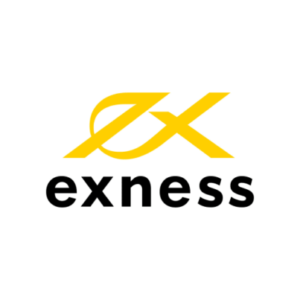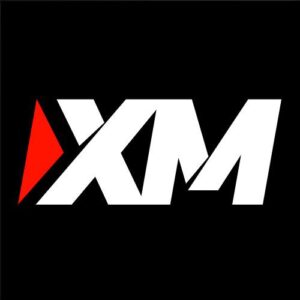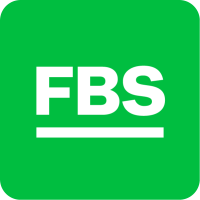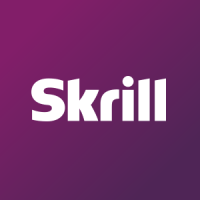Forex trading is the process of buying and selling currencies in the foreign exchange market. This beginner’s guide will cover the steps of how to get started in forex trading.
Forex trading, also known as foreign exchange trading, is a decentralized global market where currencies are bought and sold. It is the world’s largest financial market, with trillions of dollars traded daily. Forex trading involves predicting the value of one currency against another and making trades accordingly.
To begin forex trading as a beginner, you need to choose a broker, set up a trading account, research and analyze the market, and develop a trading plan. It’s important to have a basic understanding of forex terminology and concepts, such as pips, leverage, and currency pairs, to be a successful trader. With dedication, discipline, and practice, anyone can become a successful forex trader.
Explanation Of Forex Trading
Forex (foreign exchange) trading is the process of buying and selling currencies in order to make a profit. The forex market is the largest financial market in the world, with an average daily trading volume of $5. 3 trillion. In forex trading, traders speculate on the price movements of currency pairs.
Profits are made by buying a currency pair at a low price and selling it at a higher price, or by selling a currency pair at a high price and buying it back at a lower price.
Forex Market Overview
The forex market is open 24 hours a day, 5 days a week. Traders can access the market through an online broker. The forex market is divided into major, minor, and exotic currency pairs. Major pairs include the us dollar, euro, Japanese yen, British pound, swiss franc, Canadian dollar, and Australian dollar.
The forex market is influenced by economic and political events and news, as well as market sentiment and technical analysis.
Advantages Of Forex Trading For Beginners
- High leverage: Forex trading allows traders to trade with leverage, meaning that they can control a large amount of currency with a small investment. This can magnify profits, but also losses if not managed properly.
- Liquidity: Being the largest financial market in the world, the forex market is highly liquid, meaning that traders can always find someone to buy or sell currency from.
- Low costs: Forex trading involves low transaction costs compared to other financial markets, as brokers typically only charge a commission on the spread (the difference between the buy and sell price).
- Demo accounts: Many online brokers offer demo accounts that allow beginners to practice trading without risking real money. These demo accounts can be especially helpful for learning the mechanics of trading and testing trading strategies.
- Accessibility: Forex trading can be done from anywhere with an internet connection. This makes it accessible to anyone with an interest in trading, regardless of their location or schedule.
- Educational resources: With the popularity of forex trading, there are a wide variety of educational resources available for beginners. These resources can include online courses, trading forums, and webinars.
Getting Started With Forex Trading
Forex trading is a lucrative opportunity for individuals who want to invest and grow their wealth in the currency market. The foreign exchange market (forex or fx) is a global decentralized market that involves buying and selling different currencies. Unlike the stock market, forex trading operates 24/7 giving traders the opportunity to make profits at any time of the day.
Steps To Get Started
Getting started with forex trading can be an exciting yet overwhelming experience for beginners. Here are some valuable steps to help you in your journey towards becoming a forex trader:
- Learn the basics: It is crucial to gather adequate knowledge and an in-depth understanding of the forex market before investing your money. You can research and learn through various online educational resources, tutorial videos, or by taking a trading course.
- Develop a trading plan: A trading plan is a systematic approach to executing your trades. It should detail your goals, risk management strategy, and the timeline for your trades.
- Practise with a demo account: A demo account is like a simulation of real trading where you can trade without risking any of your capital. It helps you to gain practical experience and confidence in your trading abilities before you start trading with real money.
Choosing A Forex Broker
Choosing a reputable forex broker is critical as they will be the intermediary between you and the currency markets. Here are some factors that you should consider before selecting a forex broker:
- Regulation: Ensure that the broker you choose is regulated by a governing body, such as the financial conduct authority (fca), in your country of residence.
- Trading platform: The trading platform should be user-friendly, reliable, and should offer real-time trading data with essential technical analysis tools.
- Transaction costs: Transaction costs such as spreads, commissions, and fees, can impact your profitability and should be considered before choosing a broker.
- Customer service: Choose a broker that offers excellent customer support, with quick responses to queries or technical glitches.
Setting Up A Trading Account
After researching and selecting a broker, setting up your trading account is the next step in the process. Here are some things to consider:
- Account type: Choose an account type that aligns with your trading goals and your risk management strategy.
- Account funding: The broker should accept various payment methods, including debit/credit cards, bank transfer, or electronic wallets.
- Account verification: Before you start trading, you will have to verify your identity with the broker by providing them with your identification documents.
Making The First Trade
Once your account is funded, and your identity is verified, you can now make your first trade. Here are some essential factors to consider:
- Currency pair: Choose a currency pair that you have researched and has the best potential for profits.
- Position size: Your position size should align with your risk management strategy and should not exceed 1-2% of your trading capital.
- Stop-loss and take-profit: Set stop-loss and take-profit orders to limit your losses and protect your profits.
Forex trading can be an excellent opportunity for individuals to invest and grow their wealth. However, it is essential to learn the basics, choose a reputable broker, set up your trading account, and practice proper risk management. With these tips, you can start your journey towards becoming a successful forex trader.
Forex Trading Terminology And Concepts
Foreign exchange (forex) trading, also known as currency trading, is buying and selling different currencies to profit from their fluctuations in value. Forex trading is a complex concept for beginners to understand, and learning the correct terminology is essential to succeed in the market.
In this section, we will examine the forex trading terminology and concepts you need to know before getting started.
Key Forex Trading Terminologies
Here are several key terminologies you need to be familiar with before entering the forex market:
- Pip: Pip stands for “percentage in point” and is the smallest unit of a currency price change. It is typically the fourth decimal place for most currency pairs.
- Spread: The difference between the buying (ask) and selling (bid) price of a currency pair is known as the spread. Brokers earn their profits from the spread, which varies based on the volatility of the market.
- Leverage: Leverage allows you to control a more significant amount of currency using a small deposit or margin. Forex brokers offer varying levels of leverage, ranging from 1:50 to 1:1000.
- Margin call: A margin call occurs when you have insufficient funds in your trading account to cover your losing trades, and your broker demands you to add more funds to your account.
- Stop loss order: A stop-loss order is an automatic order to sell a security once the price reaches a predetermined level. Stop-loss orders are essential to minimize losses and protect yourself from unpredictable market movements.
Understanding Forex Charts
Forex charts are the backbone of technical analysis in forex trading. Traders use different chart patterns to predict future market movements by analyzing past price data. Here are some useful chart patterns to know:
- Candlestick chart: Shows the open, high, low, and close prices of a currency over a specified period. Candlestick charts are popular for analyzing price trends.
- Line chart: Displays the closing prices of a currency pair over a specified period. Line charts are ideal for identifying long-term trends.
- Bar chart: Shows the open, high, low, and close prices of a currency over a specified period. Bar charts are similar to candlestick charts but are easier to interpret for beginners.
Forex Trading Strategies For Beginners
As a beginner, it’s wise to stick to a specific trading strategy that suits your style. Here are some forex trading strategies that you can practice and build on:
- Swing trading: Trading based on technical analysis, aiming to capture price swings. Swing traders hold their positions for a few days to a few weeks.
- Scalping: Aiming to profit from small price changes, scalping typically involves opening and closing positions quickly within seconds to minutes.
- Position trading: A long-term trading strategy that focuses on holding positions for several weeks or even months based on long-term economic trends.
Popular Technical Analysis Tools Used In Forex Trading
Technical analysis tools are essential for successful forex trading. These tools help traders to analyze market trends, identify patterns, and predict future price movements. Here are some popular technical analysis tools that every beginner should know:
- Moving average: A technical indicator that tracks the average price of a currency over a specified period. Moving averages are useful in identifying trends.
- Relative strength index (rsi): A momentum oscillator that measures the speed and change of currency price movements. Rsi helps to determine whether a currency pair is overbought or oversold.
- Fibonacci retracement: A technical analysis tool that identifies potential trading levels based on the fibonacci sequence. Fibonacci retracements are essential for identifying support and resistance levels.
It’s essential to understand the terminologies and concepts of forex trading before getting started. By knowing the basics of forex trading terminology, the importance of forex charts, various forex trading strategies, and some popular technical analysis tools, you can confidently start trading in the forex market.
Fundamental And Technical Analysis In Forex Trading
Forex trading is a popular way to invest and exchange currency. In forex trading, two types of analyses are key to success – fundamental analysis vs. technical analysis. In this section, we will explore these two types of analyses in detail, while also discussing the importance of the economic calendar, major indicators, and technical analysis tools for forex trading.
Fundamental Analysis Vs. Technical Analysis
Fundamental analysis is a method of determining the intrinsic value of a financial asset by examining relevant economic and financial factors. This analysis is based on examining macroeconomic indicators, such as inflation rates, gross domestic product (gdp), and interest rates.
Traders can use fundamental analysis to determine market trends, assess the value of currencies, and make informed trading decisions.
Technical analysis, on the other hand, is a method of analyzing financial assets based on statistical data generated by market activity, such as price and volume. Technical analysis uses charts and other technical tools to identify patterns and trends in market behavior, which can help traders make more informed trading decisions.
Economic Calendar And Forex Trading
In forex trading, the economic calendar provides a schedule of economic events, such as data releases and announcements, that may affect the market movement. These events can cause volatility in the market, presenting both risks and opportunities for traders. Therefore, keeping an eye out for the economic calendar helps traders make informed decisions about when to enter or exit trades.
Major Indicators And How To Use Them
Major indicators in forex trading are significant economic data that can inform trading decisions. Some of these indicators include interest rates, inflation rates, and employment data. Understanding how to use major indicators is essential in making informed trading decisions. For example, interest rate hikes generally lead to a stronger currency, and vice versa.
Technical Analysis Tools For Forex Trading
Technical analysis tools are essential to forex trading. These tools include charts, trend lines, and various indicators, such as moving averages, bollinger bands, and relative strength index (rsi). These tools help traders identify trends and patterns, which can inform trading decisions.
Understanding and effectively using these tools requires practice and experience.
Both fundamental analysis and technical analysis play a crucial role in forex trading. By understanding the economic calendar, major indicators, and technical analysis tools, traders can gain valuable insights into the market and make informed trading decisions.
Risk Management In Forex Trading
Forex trading for beginner step by step: risk management in forex trading
Forex trading can be lucrative, but it can also be unpredictable. Like any investment, there is always risk. However, with the right risk management strategies, forex trading can be a great opportunity to increase your financial portfolio. In this guide, we’ll explore how to manage your risks in forex trading, covering evaluation of risk and reward, stop-loss strategies, position sizing, and trade monitoring.
Evaluating Risk And Reward
When you’re investing in forex, it’s essential to evaluate the risk versus reward of your trades. Understanding the potential losses and gains will help you decide whether to make a trade.
Here are some key factors to consider when evaluating the risk and reward of your trades:
- Understand the forex market: Know the current market trends, identify economic events that can influence the market, and stay on top of developments in the currency market.
- Analyze charts: Technical analysis of charts can help you identify price trends, support and resistance levels, and other factors that may influence a currency’s value at any given time.
- Establish a game plan: Before placing a trade, know exactly what you want to achieve. Have realistic goals and a strategy, including identifying entry and exit points.
- Assess market volatility: Know the level of uncertainty of the market and adjust your risk management strategies accordingly.
Stop-Loss Strategies
Stop-loss strategies are one of the most crucial risk management tools available. They aim to minimize losses in the event of unsuccessful trades.
Here are some stop-loss strategies you can utilize:
- Set predetermined stop-loss orders: With this method, the broker will close your trade when a certain minimum is reached, potentially minimizing losses.
- Multiple exits: Instead of a single exit point, have multiple exit points at different levels, ensuring that you can exit the trade with minimal losses when the trade goes against you.
- Trailing stops: As the value of the currency rises, the stop loss order is moved up, minimizing losses in the event of market volatility.
Position Sizing
Position sizing is an important concept in risk management. It refers to determining the appropriate trade amount to minimize risks while maximizing returns.
Here are some position sizing strategies to consider:
- Percentage risk per trade: Determine the percentage risk you are willing to take per trade. Typically, it should be between 1-2% of your overall capital.
- Risk-to-reward ratio: Figure out the ratio of the potential reward to the risk of the trade.
- Utilize leverage wisely: Leverage can be an advantage and a disadvantage in trading. Use it wisely to your advantage and not beyond your risk appetite.
Monitoring Trades
Monitoring trades is an essential aspect of risk management in forex trading. As a trader, monitoring your trades allows you to identify trends, adjust trading strategies, and minimize potential losses.
Here are some tips for monitoring trades effectively:
- Regular monitoring: Keep an eye on your trades and adjust your stop-loss and take-profit levels accordingly.
- Stay up-to-date: Stay informed of any breaking news or economic events that may influence the market and adjust your trades accordingly.
- Keep records: Keeping a record of your trades can help you analyze your performance and improve future trading strategies.
Risk management is an essential component of forex trading and can be a difference-maker between profitable and unsuccessful trades. By evaluating risk and reward, utilizing stop-loss strategies, position sizing, and monitoring trades effectively, traders can minimize risks and maximize returns.
Frequently Asked Questions For What Is Forex Trading ? Forex Trading For Beginner Step By Step
What Is Forex Trading?
Forex trading is the buying and selling of currencies on the foreign exchange market. Traders aim to make a profit by betting on the exchange rate fluctuations between two currencies. The market operates 24/7, and it’s the largest and most liquid market in the world.
How Do I Start Forex Trading As A Beginner?
To start trading forex as a beginner, you need to learn the basics of trading, understand market movements, and choose a reliable broker. It’s important to create a trading strategy, use demo accounts to practice trading, and manage risks. You can also join trading communities and learn from experienced traders.
What Are The Risks Associated With Forex Trading?
Forex trading involves risks such as market volatility, leverage risks, counterparty risks, and interest rate risks. Traders must be prepared to lose money and understand that trading forex is not a get-rich-quick scheme. It’s important to plan and manage risks to protect your capital.
How Much Money Do I Need To Start Forex Trading?
The amount of money you need to start forex trading depends on your trading style, strategy, and the broker you choose. Some brokers offer minimum deposit requirements as low as $100, depending on the account type. However, it’s recommended to start with enough capital to manage risks effectively.
What Are The Most Popular Currency Pairs For Trading?
The most popular currency pairs for trading are the major pairs, which include eurusd, usdjpy, gbpusd, usdchf, audusd, and usdcad. These pairs account for the majority of the trading volume in the forex market and offer high liquidity and tight spreads.
Conclusion
Aspiring traders looking for lucrative money-making opportunities need to learn the ins and outs of forex trading. Learning to trade in the forex market takes significant time, effort, and dedication to master the art of trading. Any beginner must understand forex trading basics, tools, techniques, and strategies to develop a thriving forex trading business.
By following the steps and guidelines discussed in this insightful post, beginners can make informed decisions while taking calculated trading risks. It is crucial to create a robust trading plan, remain disciplined, and manage trading risks efficiently. Regular practice, continuous learning, and keeping up with market trends and updates are also imperative to gain confidence and become a successful forex trader.
Invest in yourself today, and start your journey towards a better financial future by taking advantage of the vast opportunities that trading in the forex market has to offer.
Name
Details
Rating
Regulation: CySEC, FCA, DFSA, FSCA, FSA, CMA
Founded: 2008
Founders: Petr Valov, Igor Lychagov
Year Founded : 2008
Deposit Methods: VISA, MasterCard, Neteller, Skrill, WM, PM, Crypto (MORE)
Leverage: 1:30 | 1:500
Regulation: CySEC, FCA, DFSA, FSCA, FSA.
Min. Deposit: 5 US$
Min. Withdraw : 5 US$
HQ: Sydney, Australia
Platforms: MT4, MT5, ctrader, web trading
Found in: January 30, 2007
Deposit Methods: Bank Wire (BankTransfer), VISA, MasterCard, Neteller, Skrill, WM, PM, Crypto
Year Founded : 2010
Cryptocurrencies:
 Yes
YesDeposit Methods: Local Deposit, Bank Wire (BankTransfer), VISA, MasterCard, Neteller, Skrill, WM, PM, Crypto, USDT
Year Founded : 2010
Cryptocurrencies: (5+) Bitcoin, Litecoin, Ethereum
Deposit Methods: Local Deposit, Bank Wire (BankTransfer), VISA, MasterCard, Neteller, Skrill, WM, PM, Crypto, USDT (MORE)
Year Founded : 2009
Cryptocurrencies:



Deposit Methods: Bank Wire (BankTransfer/SWIFT), VISA, MasterCard, Alipay, Bitcoin, Bitcoin Cash, Boleto, Ether/Ethereum, Litecoin, Local Bank Deposits, M-Pesa, Mobile Money, Monero, PerfectMoney, Ripple, WebMoney
Year Founded : 2009
Cryptocurrencies:



Deposit Methods: Local Deposit, Bank Wire (BankTransfer), VISA, MasterCard, Neteller, Skrill, WM, PM, Crypto, USDT
Year Founded : 2009
Cryptocurrencies:



Deposit Methods: Bank Wire (BankTransfer/SWIFT), VISA, MasterCard, Alipay, Bitcoin, Bitcoin Cash, Boleto, Ether/Ethereum, Litecoin, Local Bank Deposits, Mobile Money, PerfectMoney, WebMoney, USDT
Year Founded : 2011
Cryptocurrencies: (25+) Bitcoin, Litecoin, Ethereum
Deposit Methods: Bank Deposit, VISA, awepay, Bitcoin, FasaPay, Local Bank Deposits, Local Bank Transfers, Neteller, paytm, Skrill, UnionPay, USDT
Leverage: 1:20 | 1:500
Regulation: CySEC, FCA, DFSA, FSCA, FSA.
Min. Deposit: 50 US$
Min. Withdraw : 50 US$
HQ: Australia, Cyprus, and the UK.
Platforms: MT4, cTrader, web trading
EAs/Robots: ✅ Yes | News Trading: ✅ Yes | Scalping: ✅ Yes
Cryptocurrencies: 20+) Bitcoin, Litecoin, Ethereum
Deposit Methods: Local Deposit, Bank Wire (BankTransfer), VISA, MasterCard, Neteller, Skrill, Crypto. USDT
Leverage: 1:20 | 1:500
Regulation: CySEC, FCA, DFSA, FSCA, FSA.
Min. Deposit: 100 US$
Min. Withdraw : 100 US$
HQ: Cyprus, the UK, Australia, and the United States.
Platforms: MT4, cTrader, web trading
EAs/Robots: ✅ Yes | News Trading: ✅ Yes | Scalping: ✅ Yes
Cryptocurrencies: 20+) Bitcoin, Litecoin, Ethereum
Deposit Methods: Local Deposit, Bank Wire (BankTransfer), VISA, MasterCard, Neteller, Skrill, Crypto. USDT
Leverage: 1:20 | 1:500
Regulation: CySEC, FCA, DFSA, FSCA, FSA.
Min. Deposit: 50 US$
Min. Withdraw : 50 US$
HQ: Australia, Cyprus, and the UK.
Platforms: MT4, cTrader, web trading
EAs/Robots: ✅ Yes | News Trading: ✅ Yes | Scalping: ✅ Yes
Cryptocurrencies: 20+) Bitcoin, Litecoin, Ethereum
Deposit Methods: Local Deposit, Bank Wire (BankTransfer), VISA, MasterCard, Neteller, Skrill, Crypto. USDT
Year Founded : 2010
Cryptocurrencies:



Deposit Methods: Local Deposit, Bank Wire (BankTransfer), VISA, MasterCard, Neteller, Skrill, WM, PM, Crypto, USDT
A Forex broker is a financial services company that provides traders with access to the foreign exchange market. The primary function of a Forex broker is to facilitate the buying and selling of currencies by acting as an intermediary between the trader and the market ( Forex BD / BD Forex / ForexBD / ForexBDLTD / Forex bd LTD / @forexbd )..
Forex brokers offer traders a variety of services, including trading platforms, market analysis, and educational resources. They also provide access to leverage, which allows traders to control larger positions with a smaller amount of capital.
Forex brokers can operate in different ways, such as market makers, which set their own bid and ask prices and take the opposite side of their clients’ trades, or as agency brokers, which pass their clients’ orders directly to the market without any intervention.
Choosing a reliable and trustworthy Forex broker is important for traders to ensure that they receive fair and transparent pricing, access to a range of financial instruments, and adequate customer support ( Forex BD / BD Forex / ForexBD / ForexBDLTD / Forex bd LTD / @forexbd )..
Forex brokers play an important role in the foreign exchange market by providing liquidity and enabling traders to participate in the market with ease. Forex brokers offer a wide range of services and tools to traders, including:
Trading Platforms: Forex brokers provide traders with access to trading platforms that allow them to place trades, analyze the market, and manage their trading accounts.
Market Analysis: Forex brokers offer traders access to market analysis, including news, research, and economic data. This can help traders make informed decisions about when to enter or exit the market.
Educational Resources: Forex brokers often provide educational resources, such as webinars, videos, and tutorials, to help traders improve their trading skills and knowledge.
Leverage: Forex brokers offer traders access to leverage, which allows traders to control larger positions with a smaller amount of capital. However, it’s important to note that leverage can increase both potential profits and losses.
Customer Support: Forex brokers provide customer support to help traders with any questions or issues they may have ( Forex BD / BD Forex / ForexBD / ForexBDLTD / Forex bd LTD / @forexbd )..
When choosing a Forex broker, traders should consider factors such as the broker’s reputation, regulation, trading conditions, fees and commissions, and customer support. It’s important to choose a broker that is reliable, transparent, and offers competitive pricing and trading conditions.
Forex brokers provide traders with access to various types of trading platforms, each with its own unique features and advantages. Here are some of the most common types of Forex broker platforms:
MetaTrader 4 (MT4): MT4 is one of the most popular Forex trading platforms, used by millions of traders worldwide. It is known for its user-friendly interface, extensive charting tools, and support for automated trading through Expert Advisors (EAs) ( Forex BD / BD Forex / ForexBD / ForexBDLTD / Forex bd LTD / @forexbd )..
MetaTrader 5 (MT5): MT5 is the newer version of MT4 and offers additional features and improvements, such as more advanced charting tools, additional order types, and support for more financial instruments.
cTrader: cTrader is a trading platform that offers advanced charting tools, support for automated trading, and fast order execution. It is known for its user-friendly interface and customization options.
WebTrader: WebTrader is a browser-based trading platform that allows traders to access the market from any device with an internet connection. It is a popular choice for traders who prefer a simple and easy-to-use platform ( Forex BD / BD Forex / ForexBD / ForexBDLTD / Forex bd LTD / @forexbd )..
Mobile Trading Platforms: Forex brokers also offer mobile trading platforms that allow traders to access the market and manage their positions from their smartphones or tablets. These platforms typically offer a range of features, including real-time quotes, charts, and news updates.
When choosing a Forex broker platform, it’s important to consider factors such as ease of use, charting tools, order types, automated trading options, customization options, and compatibility with your trading style and strategy. Ultimately, the best platform for you will depend on your individual needs and preferences as a trader.
Forex brokers can be categorized into different types based on their business model and the services they offer to their clients. Here are some of the most common types of Forex brokers ( Forex BD / BD Forex / ForexBD / ForexBDLTD / Forex bd LTD / @forexbd ). :
Dealing Desk (DD) Brokers: Dealing Desk brokers, also known as market makers, act as counterparties to their clients’ trades. They provide liquidity to the market by taking the opposite side of their clients’ trades, and may also offer fixed spreads, guaranteed stop-loss orders, and other risk management tools.
No Dealing Desk (NDD) Brokers: No Dealing Desk brokers do not act as counterparties to their clients’ trades, but instead route their orders directly to liquidity providers, such as banks, financial institutions, and other brokers. NDD brokers typically offer variable spreads and faster order execution speeds than DD brokers.
Electronic Communication Network (ECN) Brokers: ECN brokers are similar to NDD brokers, but instead of routing orders to a single liquidity provider, they connect their clients to a network of liquidity providers, which compete to offer the best bid and ask prices. ECN brokers typically charge a commission for their services, but offer some of the tightest spreads and fastest order execution speeds in the market.
Straight Through Processing (STP) Brokers: STP brokers are similar to NDD brokers, but instead of routing orders directly to liquidity providers, they use automated systems to execute orders based on pre-defined trading rules. STP brokers may offer variable or fixed spreads, and may charge a commission or markup on their services.
Hybrid Brokers: Hybrid brokers combine elements of different business models, such as acting as both a market maker and an ECN broker, or offering both fixed and variable spreads. Hybrid brokers may offer a range of services and account types to meet the needs of different types of traders.
When choosing a Forex broker, it’s important to consider the broker’s business model and the services they offer, as well as their reputation, regulation, and customer support. The best broker for you will depend on your individual needs and trading style, as well as the trading conditions and fees offered by the broker.
Forex trading is a popular financial activity that involves buying and selling currencies to profit from the fluctuations in exchange rates. As with any financial activity, it is essential to choose a reputable and regulated broker to ensure the safety of your funds and a fair trading environment. In this article, we will discuss some of the top regulated forex broker houses.
Online forex trading payment methods refer to the various payment options available for forex traders to deposit or withdraw funds from their trading accounts. In the world of forex trading, payment methods play a vital role in facilitating smooth transactions, and it is important to choose a secure and reliable payment method that suits your needs.
Like, Share & Subscribe to Our Official Sites
Contact with Us :
Copyright © 2023 Forex BD
Risk Warning: Trading on financial markets carries risks. Contracts for Difference (‘CFDs’) are complex financial products that are traded on margin. Trading CFDs carries a high level of risk since leverage can work both to your advantage and disadvantage. As a result, CFDs may not be suitable for all investors because you may lose all your invested capital. You should not risk more than you are prepared to lose. Before deciding to trade, you need to ensure that you understand the risks involved and take into account your investment objectives and level of experience.
Disclaimer : Forexbd.ltd is not encouraging anyone to do forex/stock trading, as there are investments and financial risks involved. ForexBD channel or videos are educational and informative. Before deciding to invest in the forex market, you should carefully consider your investment objectives, level of experience, and risk appetite.
#ForexTrading #ForexMarket #ForexBroker #ForexSignals #ForexAnalysis #ForexEducation #ForexPlatform #ForexTools #ForexStrategy #ForexTradingTips #ForexInvesting #ForexNews #CurrencyTrading #OnlineTrading #TradingSoftware #TechnicalAnalysis #FundamentalAnalysis #RiskManagement #MarketResearch #TradingCommunity #ForexTradingSignals #ForexTradingSystem #ForexMarketAnalysis #ForexMarketNews #ForexMarketResearch #ForexTradingStrategies #ForexTrader #ForexTradingSoftware #ForexTradingCourse #ForexTradingForBeginners #ForexTradingPlatform #ForexTradingEducation #ForexTradingAcademy #ForexTradingOnline #ForexTradingCommunity #ForexTradingCharts #ForexTradingIndicators #ForexTradingAccount #ForexTradingCoach #ForexTradingRobot


























